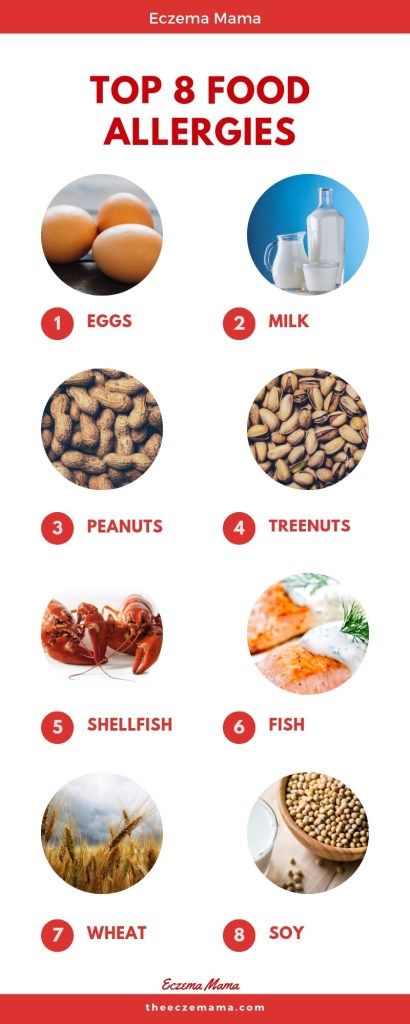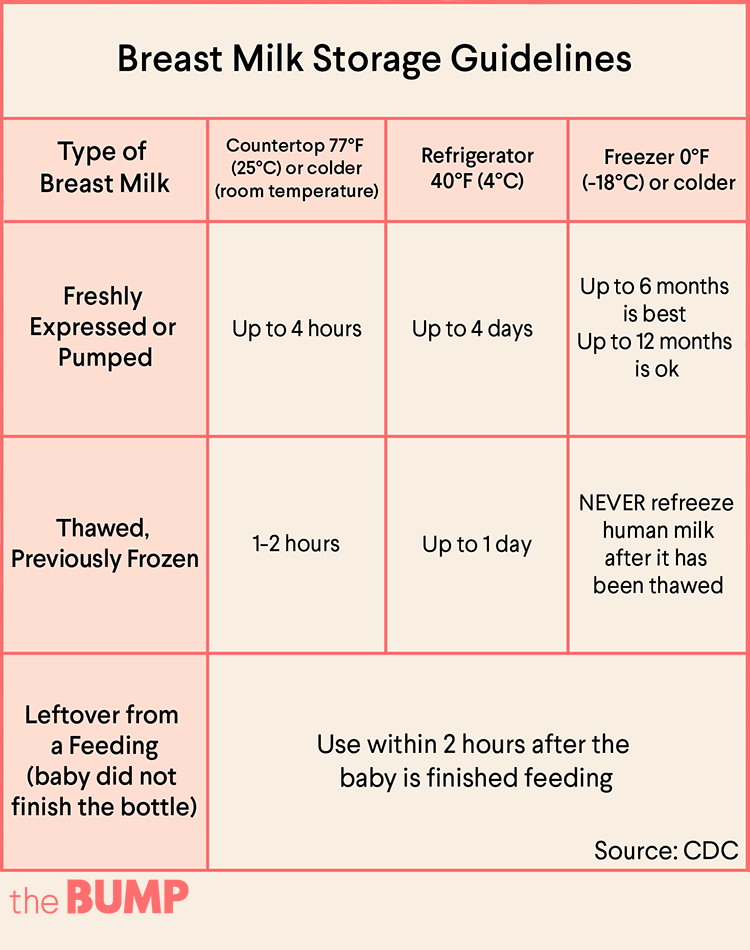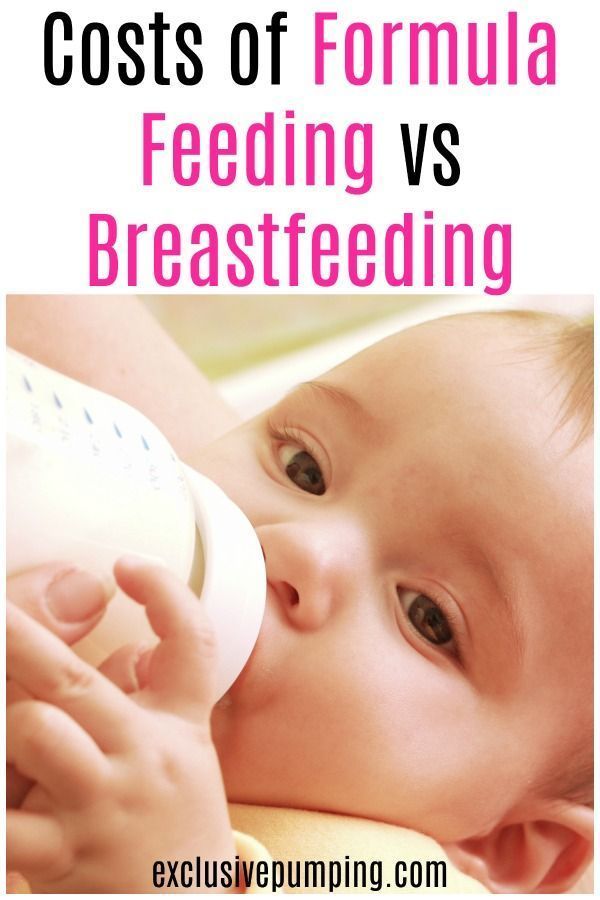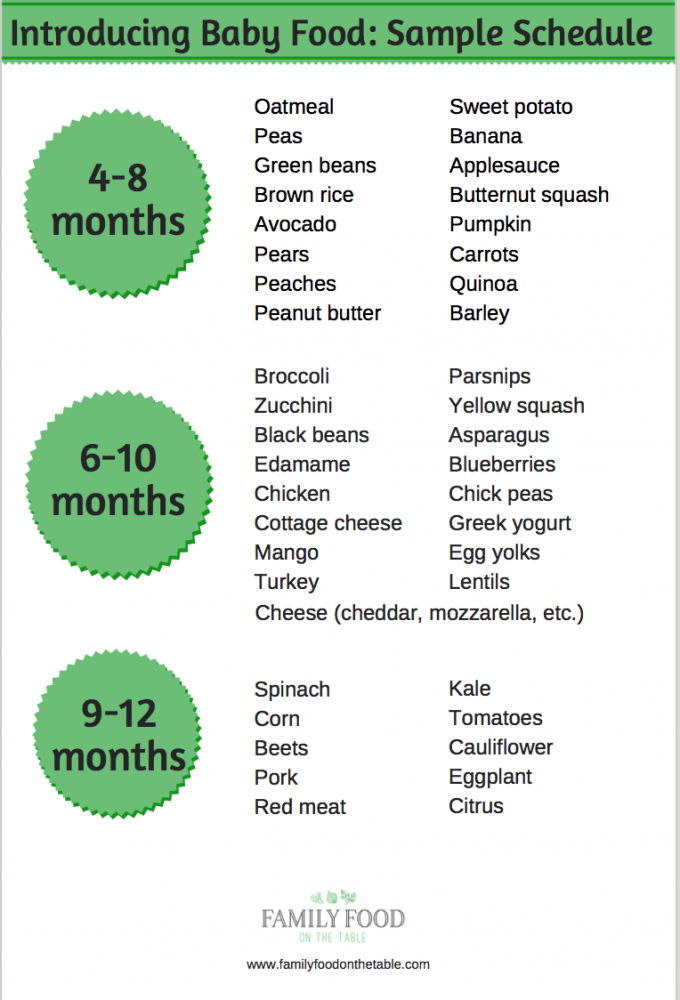Baby allergen foods
Common food allergens and kids
Share:
Sharing new foods with your baby is an exciting milestone. Unfortunately, amongst the fun of watching your child experience new tastes remain questions and fears about food allergies. Recommendations of when to introduce certain foods seem to change often, and for many parents, it can be confusing to know what is best for your child at each age.
April Clark, registered dietitian with the Food Allergy Center at Children’s Health℠, offers tips on when and how to introduce the top allergenic foods.
How to decrease the chance of food allergies in kids
The eight most common food allergens include: cow’s milk, eggs, peanuts, soy, tree nuts, finned fish, shellfish and wheat (gluten). According to the FDA, they account for approximately 90% of all food allergies in the United States.
Previously, the American Academy of Pediatrics (AAP) recommended that the introduction of certain highly allergenic foods be delayed in high-risk children. However, the AAP now recognizes that early introduction of peanuts decreases the chance of developing peanut allergies. Clark recommends following new guidelines to slowly introduce allergenic foods after the addition of solid foods, which often occurs during a baby’s first 4 to 6 months.
Tips on introducing new foods
Clark recommends that any of the foods noted below should be introduced one at a time, and parents should carefully observe their child’s reactions. Foods should first be given as single ingredients – not as part of a recipe like eggs in a baked good. They can also be given with complementary fruits and vegetables that have already been proven safe.
If there isn’t an allergic reaction once a food is introduced, continue including it at least three times a week in your child’s meals to ensure the best results. There isn’t a firm deadline to stop serving the foods. Instead, Clark notes that a healthy, well-balanced diet should normally contain variations of these common foods.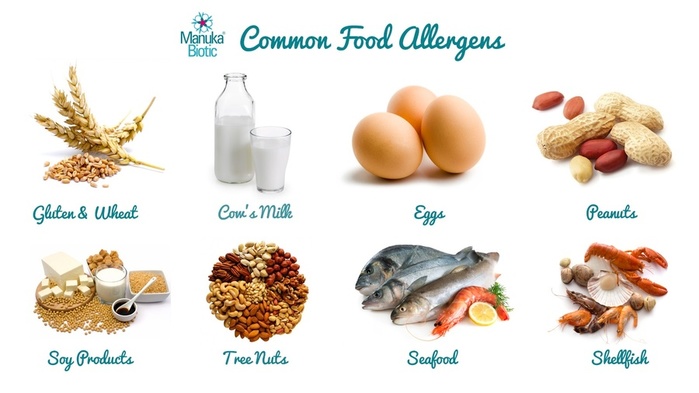
- Cow’s milk (dairy) may be one of the first allergies to be noticed, as many formulas are made with milk. Unlike the other foods listed, experts recommend waiting until after age 1 to introduce cow’s (whole) milk into a child’s diet. Instead, Clark notes babies eating solid foods should try yogurt or cheeses.
- Eggs are an excellent source of protein for growing children. Clark recommends either scrambled eggs or pieces of hard-boiled eggs. Depending on the child, they may enjoy the squishy texture and prefer to feed themselves.
- Peanuts or peanut butter are another reliable source of protein. Do not give whole or even peanut pieces, as they can be a choking hazard; instead, peanut butter is a safer alternative, but the thick consistency can be difficult for most children to swallow. Clark recommends melting down the peanut butter with warm water or adding it to a fruit or veggie puree. If a child has severe eczema, and/or already has been diagnosed with egg allergy, they should be evaluated prior to peanut introduction.
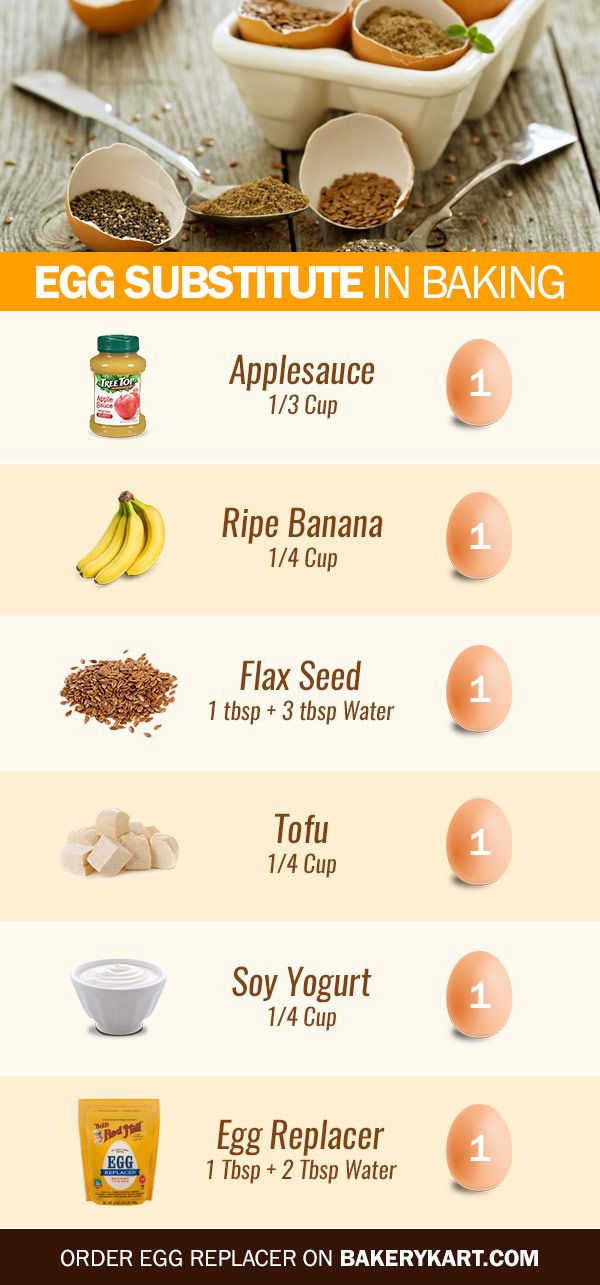
- Soy is another allergy that is noticed early due to formulas with a soy base. Protein-packed tofu and edamame (soy beans) can be introduced when your child is ready. They are great options for self-feeding. Like cow’s milk, Clark says parents should not offer soy milk until after age 1.
- Finned fish and shellfish (shrimp, crab, clams, etc.) can be introduced as a puree around the 4 to 6-month mark, or in bite-size pieces once your child is ready. In addition to possible allergies, the AAP warns parents not to serve raw or undercooked items due to possible bacteria or viruses that can make your child seriously ill. Also, the AAP notes children shouldn’t eat more than 12 ounces of fish a week due to concerns about traces of mercury in fish or shellfish.
- Tree nuts (almonds, cashews or walnuts) follow the same guidelines as peanut and peanut butter above.
- Wheat (gluten) can be introduced as finger foods in teething biscuits, puffs and crackers that contain wheat.

Signs of a food allergy
Clark notes children with a first-degree relative (parent or sibling) with allergies are more likely to also have food allergies. Children (and their parents) who have a history of severe or recurring eczema and/or asthma are also at a higher risk to develop food allergies. If your child has any of these factors, you many want to consult your pediatrician for guidance on the best way to proceed.
Allergy symptoms and reactions can vary between children and may appear differently, depending on the age. Reactions can develop minutes after the food is ingested, or there may be a delayed reaction a few hours later. Clark cautions anyone can have a severe reaction at any time, and recommends following guidelines developed by Food Allergy Research & Education (FARE) to identify an allergic reaction. See FARE's list of symptoms here.
What to do if an allergic reaction occurs
Contact your pediatrician if your child has a mild allergic reaction and it is not an emergency. Call 911 immediately for severe and life-threatening reactions.
Call 911 immediately for severe and life-threatening reactions.
If you suspect your child has a food allergy, Clark recommends seeing a board-certified allergist to discuss your concerns. Bring any information about the food, the reaction and your family history to the appointment. The physician will likely take a detailed medical and diet history, and recommend appropriate testing that’s specific to your child’s symptoms and suspected food allergens. Your allergist will be able to manage the diagnosis and answer any questions. Specialists can also provide useful information like recipes and food allergy guidelines.
Download your guide to allergen-free lunches
Looking for tips to pack allergy-friendly school lunches? Download the Parents' Guide to Allergen-Free Lunches for kid-friendly recipes that are free of the top eight food allergens. Download now.
Learn more
Food allergy experts at Children’s Health can help with testing, questions and offer patient resources. Learn more about our program and services.
Learn more about our program and services.
For more information, please see the following additional references:
- Food Allergy Research & Education (FARE)
- Instructions for feeding peanut butter and recipes
- Additional information about introducing peanut butter
- LEAP study in the U.K. (Learning Early About Peanuts)
- Recommendations from the AAP for introducing food
Children’s Health Family Newsletter
Get health tips and parenting advice from Children’s Health experts sent straight to your inbox twice a month. Sign up now.
Introducing Major Food Allergens | Happy Baby Organics
JanelMS, RD, LDN, CBS
Read time: 5 minutes
Learn the major food allergens
Understand the latest research about introducing allergens early
Recognize the symptoms of a food allergy
Keeping up with the latest food allergy recommendations can seem daunting, especially since new research seems to come out all the time. What causes food allergies and why they’re on the rise remains unclear, but the fact that they are rising cannot be disputed.
What causes food allergies and why they’re on the rise remains unclear, but the fact that they are rising cannot be disputed.
Knowing how to introduce food allergens to your baby at the right time and what signs to look for if your little one is allergic can help you feel confident in feeding your little one.
What causes a food allergy?Roughly 8% of American children have at least one food allergy.1,2 An allergic reaction to food happens when the body's immune system overreacts to a protein in food. Instead of seeing it as harmless, the food is labeled as dangerous, and the body initiates a protective response.3,
Top eight food allergensAny food has the potential to cause an allergic response, and so far over 160 foods have been identified as potential allergens.4 However, only eight foods account for about 90% of all reactions. 4
4
Top 8 food allergens:
Milk
Eggs
Peanuts
Tree Nuts (walnuts, pecans, almonds, cashews, pistachios)
Soy
Wheat
Fish
Crustacean Shellfish (shrimp, crab and lobster)
Starting in January 2023, sesame seeds will be added to the list as the ninth major food allergen.
Sesame allergy affects over 1 million Americans, prompting the passage of the FASTER (Food Allergy Safety, Treatment, Education, and Research) Act by Congress in April 2021. This will make sesame the ninth major food allergen.5,6 At that time, all foods with sesame seeds will need to be labeled, just like the current eight major allergens.4
When to introduce food allergens to your infantThe latest research has shown that there is no benefit in delaying the introduction of allergy-causing foods. 7 Because of this, the American Academy of Pediatrics (AAP) recommends introducing foods such as eggs, dairy, soy, peanuts, or fish when you introduce solids, no later than 6 months.8
7 Because of this, the American Academy of Pediatrics (AAP) recommends introducing foods such as eggs, dairy, soy, peanuts, or fish when you introduce solids, no later than 6 months.8
However, if you suspect your baby has an allergic reaction to a food or if you have a history of severe eczema or food allergies, talk to your doctor on how best to introduce allergy-causing foods.
Read more:
Starting Solids: Signs of Readiness
Introducing Solids: First Foods and Textures
What are the symptoms of a food allergy?Once you introduce a new potential food allergen to your baby, how do you know if your little one has an allergy? Symptoms of an allergic reaction may involve the skin, the digestive system, the cardiovascular system and/or the respiratory tract.9, These symptoms can vary from person to person, and from incident to incident.
It’s important to know that while a mild reaction can occur on one occasion, a severe reaction to the same food may occur when the food is introduced later.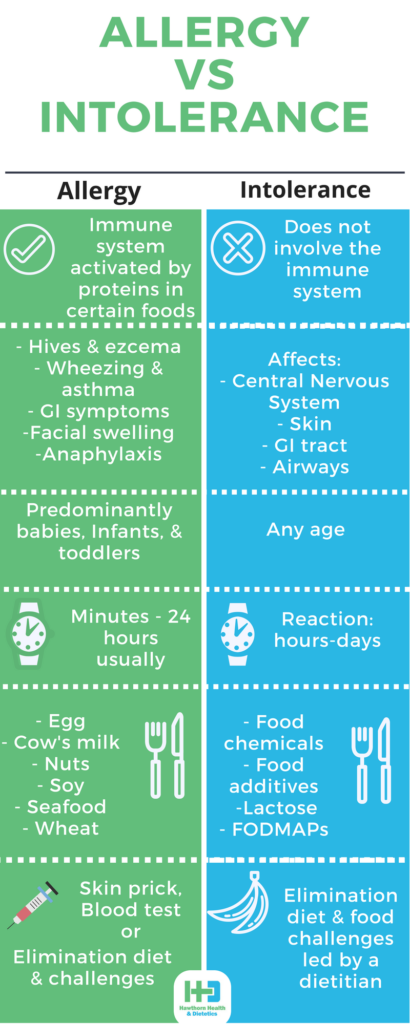 3,
3,
Symptoms of a food allergy may include:
Hives (red spots that look like bug bites)
Itchy skin rashes (eczema)
Swelling to the lips and face
Sneezing, wheezing, or throat tightness
Nausea, vomiting, or diarrhea
Pale skin
Light-headedness
Loss of consciousness
Anaphylaxis9,10
Anaphylaxis requires immediate medical treatment. Anaphylaxis is a severe and potentially life-threatening allergic reaction that can occur within seconds or up to 2 hours after a child is exposed to an allergen.3,10 It can, among other things, cause a sudden drop in blood pressure and difficulty breathing.3, If you notice any of these severe symptoms, call 911 immediately.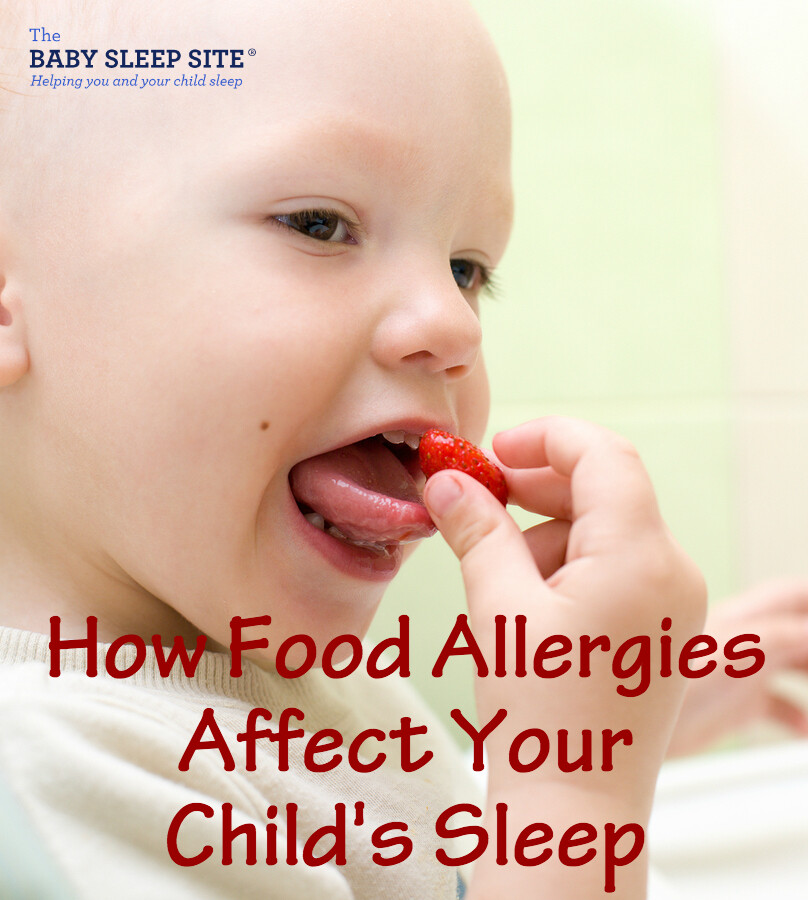
If your child has known allergies, make sure you speak to your physician or allergist to get an emergency plan in place so that you are always prepared.
Read more: Signs and symptoms of food sensitivities and allergies in children
Know if your infant is high risk before introducing food allergensDiscuss your plan to introduce solid foods and allergens with baby’s physician or allergist. Your little one may be at higher risk for food allergies if someone in baby’s family has a food allergy or has a family history of other allergic diseases, such as eczema, asthma, hay fever, or atopic dermatitis.12 Your infant may also be at higher risk if they have known allergies or severe eczema.11,13
Introduce major allergens alongside safe, already well-tolerated first foodsUnless otherwise instructed by your physician, give your baby one major allergen at a time at a rate no faster than one new food every 3 to 5 days.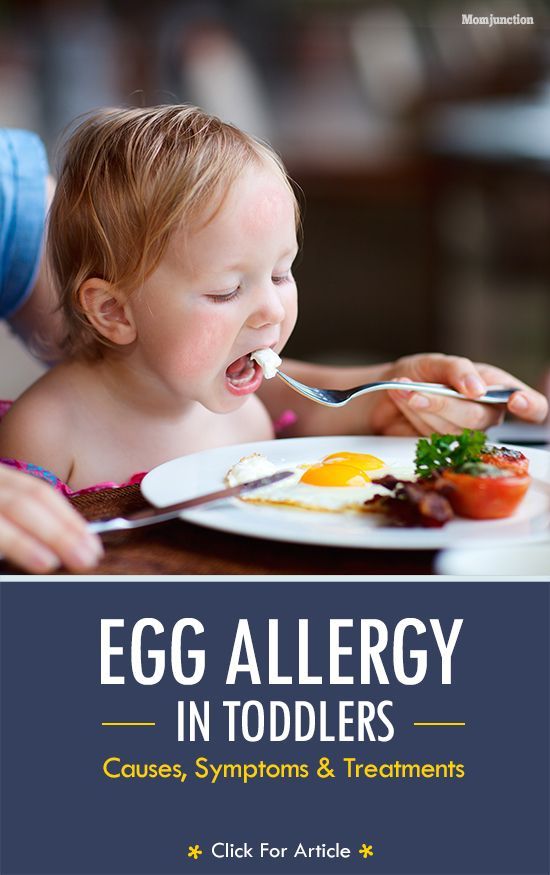 12 Make sure no other new foods are introduced at the same time so you can accurately track any symptoms that may be related to the allergen introduced.
12 Make sure no other new foods are introduced at the same time so you can accurately track any symptoms that may be related to the allergen introduced.
Note that when introducing food allergens, be sure they are in the appropriate texture for your little one’s development. Avoid choking hazards, such as whole peanuts.
You can trial dairy product such as cheese and yogurt before age one, but whole cow’s milk should be avoided until after one year of age. While the reason behind this is unrelated to allergies, it is worth noting because your baby cannot digest whole cow’s milk easily.14
Learn about:
Preventing Choking in Infants and Toddlers
Does my Baby or Toddler have a Milk Allergy or Lactose Intolerance?
Keep potential food allergens in your infant’s diet consistentlyOnce you’ve introduced a potential food allergen and your little one does well, make sure to offer that food regularly.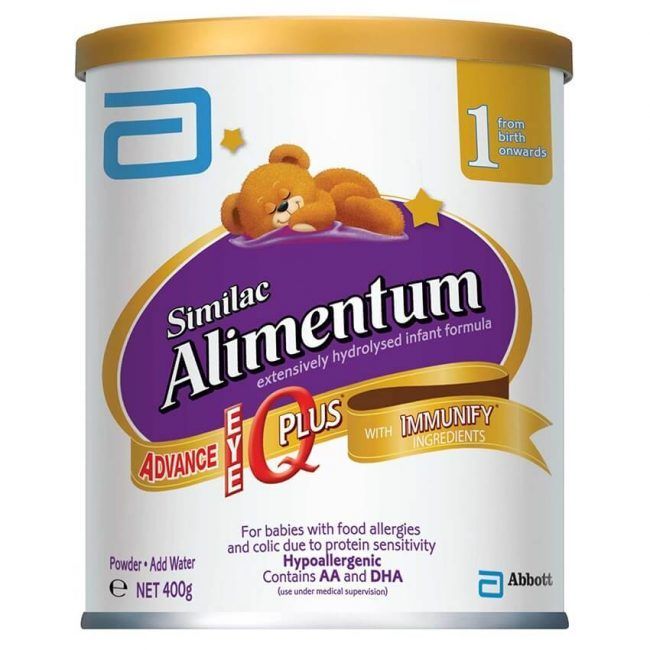 This will help your infant maintain their tolerance to it.13
This will help your infant maintain their tolerance to it.13
Introduce these allergens in a texture your little one can handle. The below give ideas for purees as well as soft finger foods, depending on the stage your little one is at.
Dairy (Cow’s milk): Whole milk yogurt or shredded cheese
Soy: Mashed tofu or small cubes of tofu
Eggs: Scrambled eggs or small pieces of hard-boiled eggs
Peanuts, tree nuts, sesame (best given in butter or powder format): Mix a small amount of nut butter or nut powder into a fruit or vegetable puree or put a very thin layer of a nut butter on strips of toast. The butter or powder may also be added to a smoothie.
Fish: Soft, moist, well-cooked fish; mashed or cut into pieces
Wheat: Wheat infant cereal such as cream of wheat, wheat-containing teething biscuits, or strips of whole wheat toast with a smidge of butter
Current research indicates that avoiding foods during pregnancy or breastfeeding is not effective in helping to reduce the risk of our babies developing allergies.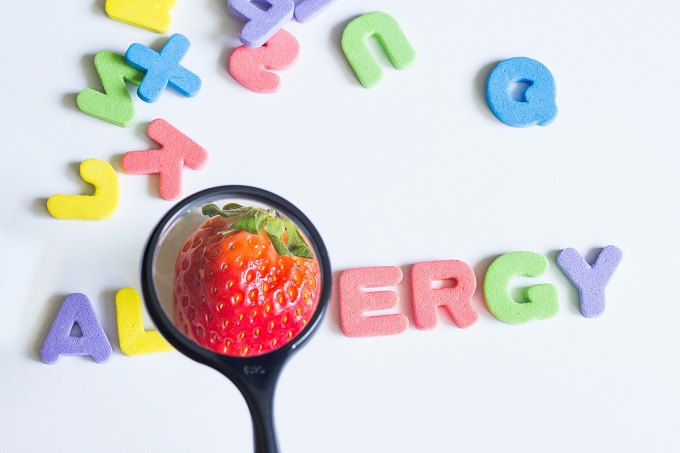 15 And in fact, there is some evidence that early introduction of allergens during pregnancy and breastfeeding, such as mom including fish and peanuts in her diet, may help to lower the risk of your little one developing allergies to these foods.16
15 And in fact, there is some evidence that early introduction of allergens during pregnancy and breastfeeding, such as mom including fish and peanuts in her diet, may help to lower the risk of your little one developing allergies to these foods.16
Of course, it is important to avoid any foods that you are allergic to! Additionally, if your breastfed baby has an allergy those foods should be avoided as well.
With this in mind, be sure to eat a wide variety of foods while you are pregnant and breastfeeding. Not only may it help reduce the risk of allergies, but you need the full range of nutrients to grow a healthy baby.
Read more:
Which Nutrients Do I Need During Pregnancy?
What to Eat while Breastfeeding
Let's Chat!We know parenting often means sleepless nights, stressful days, and countless questions and confusion, and we want to support you in your feeding journey and beyond.
Our Happy Baby Experts are a team of lactation consultants and registered dietitian nutritionists certified in infant and maternal nutrition – and they’re all moms, too! They’re here to offer personalized support on our free, one-on-one, live chat platform Monday - Friday 8am-6pm (ET), and Saturday - Sunday 8am-2pm (ET). No appointment needed, no email or sign-up required. Chat Now!
Read more about the experts that help write our content!
For more on this topic, check out the following articles:Guidance When Raising a Child with Food Allergies
Major allergens: What to Know When Pregnant and Breastfeeding
Sources
6 food allergens that should not be given to a child
Other related articles: pediatrician, proper nutrition
-
adenovirus infection
-
Adenoids
-
Autism
-
Autism (RAS)
nine0008 -
Bronchitis in children
-
Chickenpox
-
windmill parties
-
coxsackie virus
-
Questions to the pediatrician
- nine0006 All about diets
-
Flu and SARS
-
Breast milk
-
Dacryocystitis
-
Children's painkillers
-
Diet for nursing nine0007
-
Medical examination at 1 year
-
Diphtheria in children
-
For expectant mothers
-
hardening
-
Hardening of children
nine0005 -
Foreign body of the bronchi
-
Infectious mononucleosis
-
Whooping cough
-
Measles in children
-
Rubella in children nine0007
-
Deprive a child
-
false croup
-
Tangerines for children
-
Children's massage
-
Meningococcal infection
nine0005 -
First year of life
-
Baby's first year
-
Nutrition for children 1-3 years old
-
Child nutrition
- nine0006 food allergy
-
Defeat the Flu
-
Preparation for vaccination
-
Complementary foods for children
-
Child's bite
-
Walks in the cold nine0007
-
Products for longevity
-
Allergen products
-
Teething
-
Rickets in children
-
The baby is ill
nine0008 -
Rotavirus infection
-
mumps in children
-
Scarlet fever in children
-
Sleep with animals
-
Baby care
nine0005 -
Enuresis
Constipation in children
Pediatrician at home
Phytotherapy in children
Any food is capable of causing an allergic reaction, and we cannot exclude absolutely everything. But when we talk about food allergies, we immediately remember the big eight allergens:
But when we talk about food allergies, we immediately remember the big eight allergens:
- Eggs
- Milk
- Soya
- Peanut
- Nuts
- Wheat
- Fish
- Mollusks and crustaceans
Let's take a look at each product individually.
So, eggs. Eggs are recommended to be introduced into the diet from 6-8 months of age. Only fully cooked eggs should be given to children.
Milk. Milk is not recommended for children under one year of age. After a year and up to 5 years, you can include milk in the menu daily. nine0223
Soy. Soya is also recommended for consumption from one year. It is worth recalling that any plant milk is not a complete replacement for regular cow's milk.
Peanuts. Peanuts are a common allergen in many developed countries. At the same time, there are a large number of studies that have shown that the introduction of peanut butter at the age of 4-6 months reduces the risk of developing an allergy to it at an older age.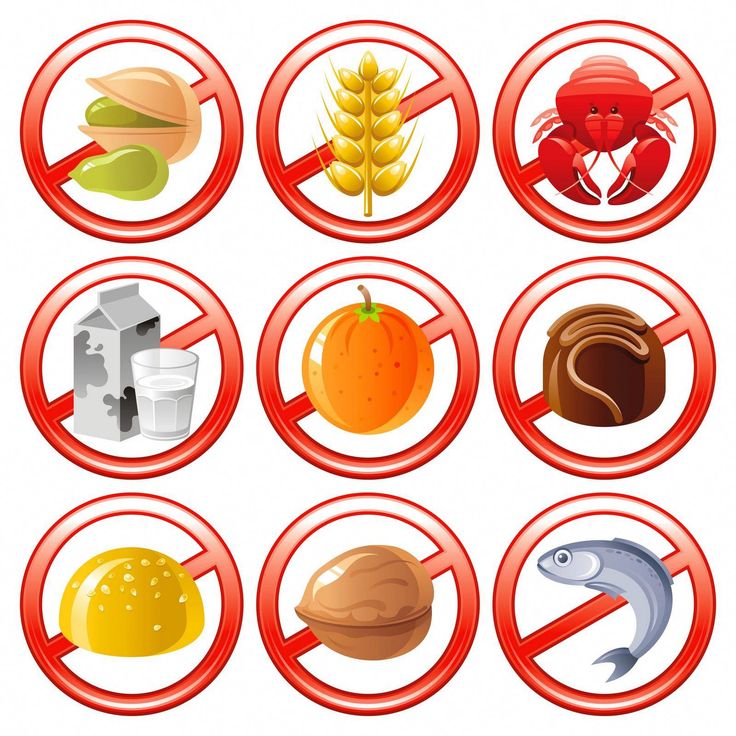 So peanut butter can be consumed from six months. nine0223
So peanut butter can be consumed from six months. nine0223
Nuts. Nuts are introduced into the diet from the year. It must be remembered that whole nuts or peanuts should not be given to children under five years of age due to the high risk of suffocation.
Wheat. Introduced into the diet from 8-10 months in the form of cereals, pasta, bread, baby cookies.
Fish. We add it to the child's diet from 8-10 months, starting with white fish, from the year you can start introducing red.
Mollusks and crustaceans. "Seafood" can be introduced into the diet of a child from the age of one. The main thing is that they are thermally fully cooked. nine0223
Thus, all the most important food allergens of this world can and should be consumed. If you suspect that your child is allergic to any product, you should consult a doctor to understand this issue. But you definitely shouldn’t exclude entire food groups from your child’s diet, since the most varied diet is the key to good health.
To be fair, there are also foods that contain high levels of histamine or cause it to be released in the body. When eating large amounts of these foods, some children may experience an allergic-like reaction. But this is not a true allergy, and the effect in this case is dose-dependent, that is: if a child eats two tomatoes, and not a kilogram, then nothing will happen. nine0223
These products include:
- Eggplant
- Tomatoes
- Pineapple, plum, banana, papaya, kiwi
- Almost all citrus fruits: lemon, lime, orange
- Pickled or preserved foods
- Hard cheeses, aged cheeses
- Smoked products, deli meats: salami, ham, sausages
- Shellfish, seafood
- Beans and legumes, chickpeas, soy flour
- Hazelnuts, walnuts, pine nuts, peanuts, cashews, almonds, pistachios
- Chocolate and other cocoa products
- Most vinegars
If you notice a reaction to any of the above foods, you can try reducing the amount in your diet and find a dose that your child can tolerate.
Food allergy is not that common in practice. This disease occurs in 6-8% of children and 3% of adults. At the same time, most children “outgrow” their allergies, and in adulthood they can safely eat foods previously excluded from the diet. nine0223
Still, there is something that should be excluded from the child's diet:
- Sugar up to two years. WHO clearly does not recommend foods containing added sugar for children under two years of age. After two years, it is worth focusing on age norms.
- Salt. It is not recommended to add it to the diet before 9 months. Up to three years - no more than two grams per day. Older than three years - no more than five.
- Honey up to a year. This is not due to its allergenicity, but to the risk of containing spores of the bacterium that causes botulism. nine0008
- Nuts, peanuts, whole grapes. Young children are at risk of suffocation with these products.

- Caffeine up to 4-5 years. Not recommended due to its stimulating effect.
- Rice milk up to 5 years. This milk may contain a high concentration of arsenic. This does not apply to rice itself and dishes from it.
- Trans fats. They are not recommended for children, as well as adults, because they increase the risk of CVD, a carcinogenic effect. nine0008
- Unwashed vegetables, raw eggs, meat.
- Products with a large amount of preservatives, dyes. It is not recommended to use up to 5-7 years, after - their content in the diet should be minimized.
In summary, we can say that there are no allergenic foods that need to be excluded from a child's diet. The diagnosis of food allergy is confirmed by the doctor, he also recommends a certain diet. And trying to delay the introduction of the most common allergens is not food allergy prevention. nine0223
nine0223
Make an appointment with a pediatrician
For more details, consult a qualified specialist at the Semeynaya clinic.
To find out the prices for a pediatric appointment or other questions, follow the link below:
Tags PediatricianProper nutrition
The most allergenic foods for children: what parents need to know - Parents.ru
0377
You can find out which are the most allergenic foods from a special table on which pediatricians' recommendations are based on the order of introduction of complementary foods. So, allergenic foods, the list of which is given in this table: cow's milk, fish, chicken, red fruits and berries, sweets.
Important details
-
Cow's milk, or rather, cow's milk protein is not tolerated by about 80% of children under 2 years of age. The reason is the lack of enzymes necessary for its processing. When they form and begin to be produced, and this happens after 2 years, the problem will disappear by itself.
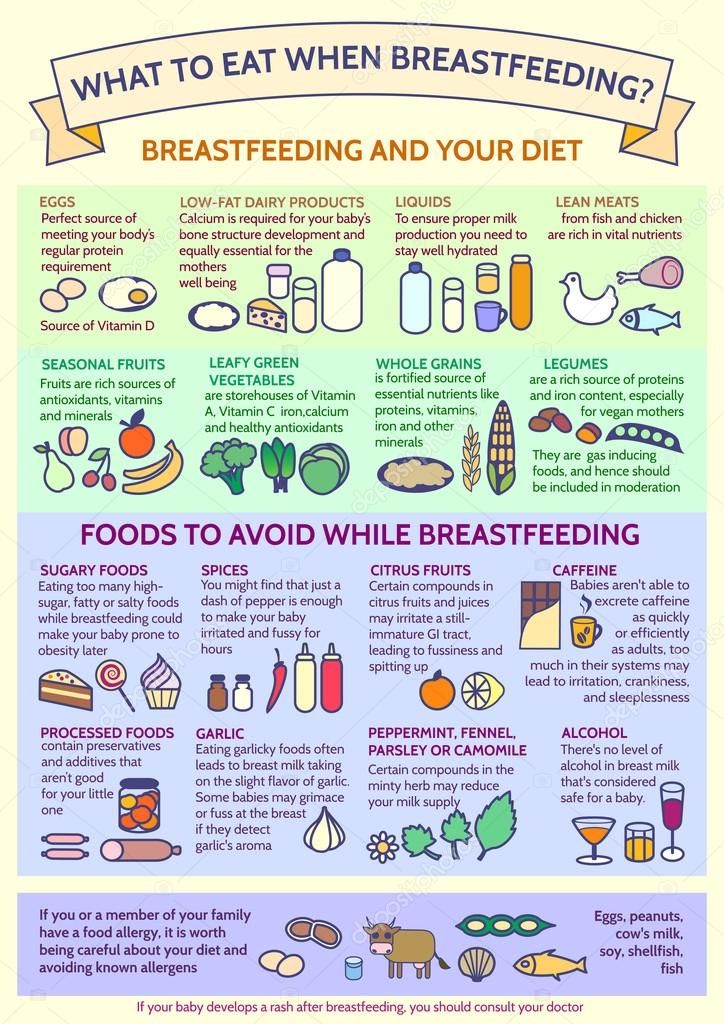 nine0223
nine0223 -
Fish is also one of the most dangerous allergens. And for some people, the smell of fish alone can cause an attack of suffocation. It is for this reason that it is introduced into complementary foods very carefully, after 8 months in microscopic doses, and the reaction of the baby is carefully monitored.
-
Eggs, to be exact, egg white. The common belief that quail eggs are not as allergic as chicken eggs is just an opinion. In fact, the reaction to them occurs at about the same frequency as to chicken protein. Conclusion: acquaintance with eggs begins with the yolk. Protein in the diet of a child appears only after the baby is 1 year old. nine0223
-
Meat. The risk of allergies is great if the baby tries the chicken. Therefore, complementary foods begin with rabbit meat, turkey and even horse meat. In any case, it is not recommended to give fatty meats and poultry. Meat broths are given to a child only after 1-1.
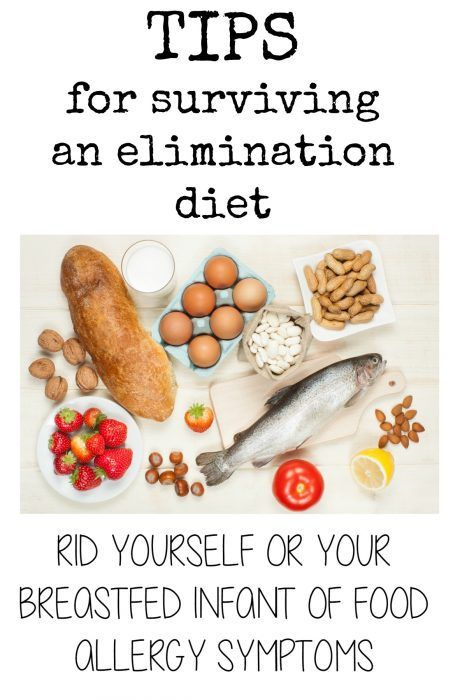 5 years. In this case, the first broth always merges. The bird must be skinned and subcutaneous fat removed.
5 years. In this case, the first broth always merges. The bird must be skinned and subcutaneous fat removed.
The first step for parents of an allergic child is to start a food diary. This is a tool that will help control the nutrition of the baby, you can show it to a specialist for whom the collected data will be a good reason for prescribing treatment or therapy. Keeping a regular and accurate diary allows you to identify potential allergens and make a list of foods for which the child has a clear intolerance. nine0223
Red fruits and berries
For very young children it is better to give green vegetables and fruits. So, for example, choose clarified juice from green apples, mash green apples and pears. As for vegetables, the child is first introduced to zucchini, cauliflower and white cabbage.
Sweets
The most harmless in terms of an allergic reaction and at the same time the most useful are marmalade and marshmallow. Make sure they are free of artificial flavors and preservatives. You can introduce a child to chocolate no earlier than 3 years. Choose milk chocolates. Acquaintance with citrus and exotic fruits is also better to postpone at least until 3-4 years. nine0223
You can introduce a child to chocolate no earlier than 3 years. Choose milk chocolates. Acquaintance with citrus and exotic fruits is also better to postpone at least until 3-4 years. nine0223
Allergenic foods while breastfeeding
To reduce the risk of developing allergies in a baby, it is recommended that a nursing mother follow a hypoallergenic diet. All the products mentioned above should be used carefully and not get carried away with them. If one of the parents has a reaction to one of the products mentioned, it is better to exclude it from the diet of a nursing mother.
- Photo
- piotr_malczyk/Getty Images/iStockphoto
Some tricks
The list of food allergens for children is very extensive, we have listed only a few of them. But this does not mean that the baby is strictly forbidden to try chocolate, nuts, red apples and chicken. Prohibitions remain only for the time being. From a certain age, the risk of allergies decreases, as the body begins to produce enzymes that facilitate the absorption of a particular product. For most allergenic foods, the threshold is 3 years of age. By the age of 3, the child's digestive system will get stronger in order to easily process the substances contained in a certain product. nine0223
Prohibitions remain only for the time being. From a certain age, the risk of allergies decreases, as the body begins to produce enzymes that facilitate the absorption of a particular product. For most allergenic foods, the threshold is 3 years of age. By the age of 3, the child's digestive system will get stronger in order to easily process the substances contained in a certain product. nine0223
The safest, including in terms of the risk of allergies, are cooking methods such as boiling, stewing, baking and steaming.
Is honey allergenic?
The answer is unequivocal: yes. If a person is allergic to plant pollen, then its presence, even in minimal amounts, can cause big trouble. In honey, as you know, pollen is present in very large quantities. A child can be introduced to honey only after 3 years. You need to start with microscopic portions and carefully monitor the reaction. At the first sign of trouble, the product is excluded from the diet. The next attempt may take place in two weeks.